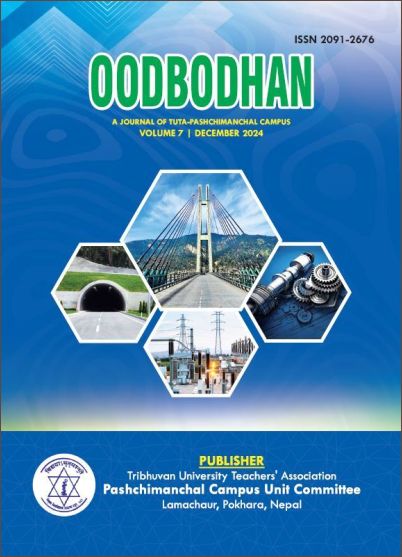Structural Analysis of Hydropower Stoplog: A Case Study of Seti Hydropower Project
DOI:
https://doi.org/10.3126/oodbodhan.v7i1.75767Keywords:
ANSYS Mechanical, CAD, FEA, MIT, Structural analysisAbstract
Hydropower stoplogs are essential components in managing water flow within hydropower facilities, playing a critical role in ensuring safe operations and maintenance. Despite advancements in technology, existing designs face persistent challenges related to efficiency, environmental impact, and maintenance needs, highlighting a significant research gap in optimizing stoplog design. This study aims to address these issues by employing Finite Element Analysis (FEA) to evaluate stress distributions and material behavior in stoplog design, thereby enhancing overall performance. The methodology involved a comprehensive literature review, analytical design calculations, and the development of a detailed Computer-Aided Design (CAD) model, followed by iterative static structural analysis using ANSYS Mechanical. Key findings revealed that the integration of stiffeners and support systems significantly improved the stoplog's performance, achieving a maximum central deflection of 11.226 mm—just within the allowable limit of 11.25 mm—and a maximum stress of 241.18 MPa, well below permissible limits. These results confirm that the optimized stoplog design is both safe and efficient, illustrating the effectiveness of FEA in advancing hydropower infrastructure.
Downloads
Downloads
Published
How to Cite
Issue
Section
License
Copyright (c) 2024 The Author(s)

This work is licensed under a Creative Commons Attribution-NonCommercial-NoDerivatives 4.0 International License.
This license enables reusers to copy and distribute the material in any medium or format in unadapted form only, for noncommercial purposes only, and only so long as attribution is given to the creator.




